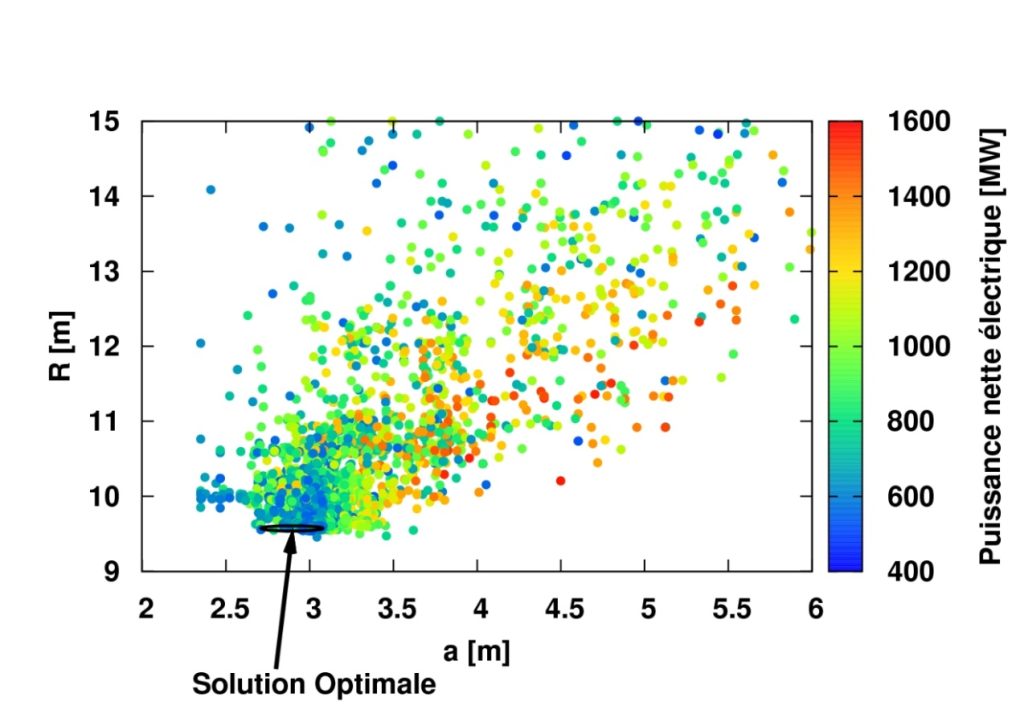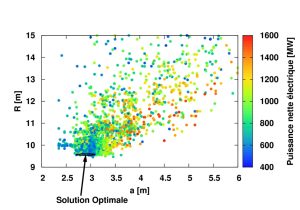The coupling of the system code SYCOMORE developed by the IRFM with the URANIE platform of the DEN has achieved a design optimization of the future fusion reactor DEMO using a genetic algorithm. The objective was to find the parameters of the smallest reactor producing at least 500 MW of electricity with long enough pulse duration.
Being the successor of ITER, DEMO will be the first reactor producing electricity with fusion reactions. This DEMOnstration reactor will have to fulfill constraints of reliability, availability and reasonable costs.
In order to satisfy such requirements, the CEA has developed the SYCOMORE system code to study DEMO concepts and parameters. This code produces full and coherent DEMO designs starting from plasma physics to the net electric power of the reactor. Each SYCOMORE module represents a reactor sub-system and uses the data structure provided by the European Integrated Tokamak Modeling Task Force. SYCOMORE is a modular code which enables studying the two main concepts of reactor, pulsed ones and steady-state ones with more advanced technologies.
In order to find the best DEMO design, SYCOMORE has been coupled to an optimizer tool included in the URANIE platform of the CEA/DEN. Thanks to its large number of functions and features, this platform is the ideal tool for that kind of reactor studies. The IRFM has developed a data exchange library via sockets to couple Sycomore and URANIE.
For the first time in that domain, DEMO design has been optimized by a genetic algorithm. Those algorithms are based on mimicking the natural selection starting from an initial population of points distributed on the range of study. Then, they evolve the population towards the optimum by repeating a process of best points selection and random recombination. Two benefits of these algorithms are the robustness of the solution and their ability to manage non valid designs as it is the case when not enough space is available inside the reactor for all subsystems.

The objective of the optimization with four variables was to find the most compact reactor to reduce construction costs while the net electric power was upper than 500MW. Both optimizations of the two reactor concepts (DEMO1 : pulsed reactor and DEMO2 steady-state reactor) were in agreement with other similar codes. It is now possible to explore new and more efficient reactor designs with other optimizations using more variables or new modules. Operational domain can also be determined with this coupling.



